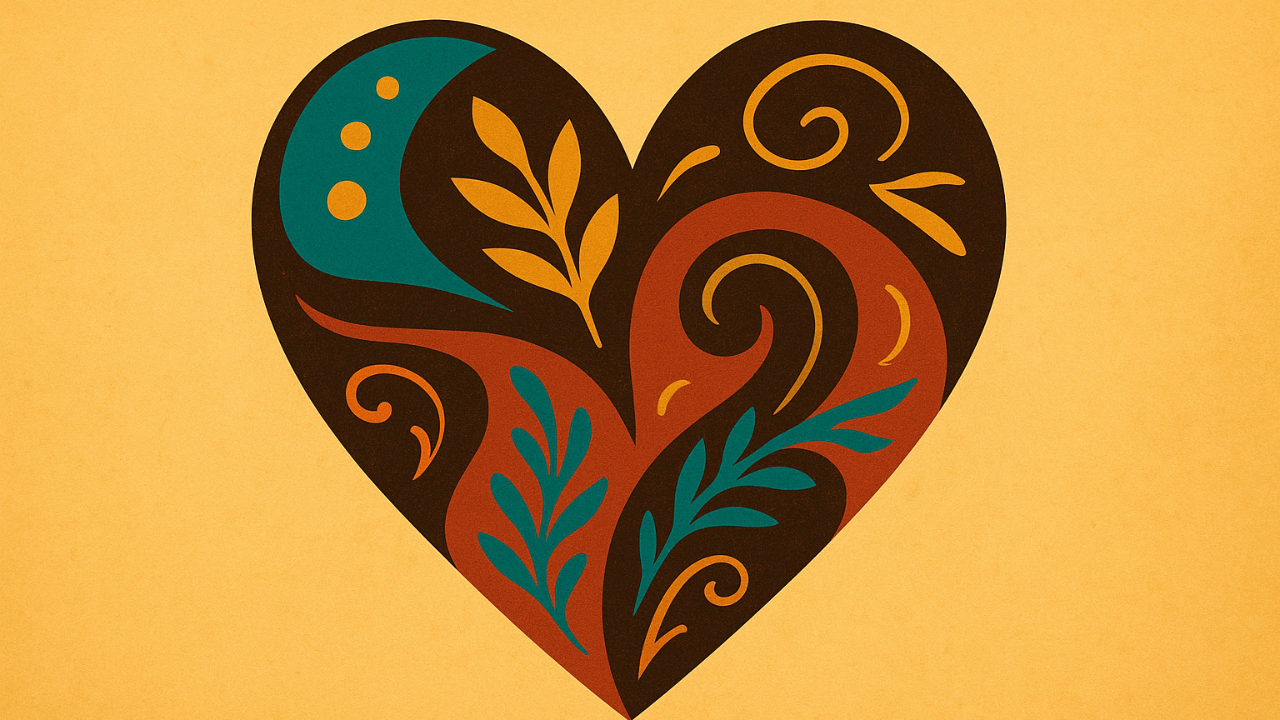Heart Is the Foundation of the Nervous System
Oct 13, 2025
In our last post, we introduced the three ways we move through the world: with Heart, Hand, and Head. These interpersonal modes from NeuroRelational Care aren’t hierarchical; they’re points on a circle, continually informing one another. Heart is the basis of relationships, driving what we do together (Hand). This leads the Head to reflect on our actions, generating insight leading to understanding that lands in the Heart. Because Heart is the center of relationships, and relationship is what fuels development, we begin our blog series with Heart.
Heart Nourishes the Brain’s Roots
Heart nourishes the bottom of the brain: the Regulation and Sensory systems that process safety, connection, and joy through the body. Safety is at the roots of the brain’s tree—the part that regulates the whole nervous system, keeping everything else flowing. When the lower brain feels safe and steady, the entire nervous system is supported, keeping a regulated Hand and Head.
Imagine a parent sitting beside a child who’s overwhelmed. The parent hums softly, breathing slowly enough for the child’s body to catch the rhythm. No words are needed—in fact, too many words only get in the way. The message is clear: “I’m here with you.” That sensory experience of warmth, tone, and rhythm is what builds the brain from the bottom up. Heart work is body work. What the body feels, the brain builds.
What Happens to Heart Under Stress
When stress rises, Heart loses its resonance.
For some of us, Heart disappears. We harden, disconnect, or go through the motions. For others, Heart goes into overdrive, and we become over-accommodating, worry, or use emotion to manage behavior.
A parent under stress might become permissive, afraid that setting limits will make things worse. Another parent might tighten up, using control to keep chaos at bay. In both cases, Heart has lost its balance.
The same pattern shows up for practitioners. Under pressure, we might rush to comfort caregivers rather than help them grow, or push them too hard when they’re already at their limit. When stress is in the driver’s seat, Heart either overreaches or retreats. The resonance turns either into noise or silence.
A Regulated Heart Is A Compassionate Heart
When we’re regulated, Heart returns to resonance. We feel warmth and clarity at the same time. A regulated Heart doesn’t melt into others’ emotions, and it doesn’t wall off from them. It stays open, grounded, and responsive. This is our natural state of being when stress is not too much.
Heart can come in at any time. After snapping at her son for refusing to get ready for bed, a parent, feeling regret in her chest, kneels beside him and says, “That was a lot for both of us. Let’s take a breath and start over.”
His shoulders drop. The room quiets. They find each other again, not through explanation but through simple presence.
Or picture a practitioner who notices tension in a parent’s shoulders. Instead of offering advice, she says, “Let’s take a breath before we decide what to try next.” The moment softens. The parent exhales. Curiosity comes back into the room.
Heart doesn’t mean being permissive; it means being emotionally available enough to access the guiding Hand and the reflective Head.
Heart Is the Foundation for Growth
Heart is the soil where the rest of the brain grows. Regulation is the root system in that soil—it allows everything else to flourish from there.
Without a regulated Heart, the Hand and Head don’t have a solid foundation for being balanced and, therefore, effective. When Heart is steady, the Hand’s actions stay connected to purpose, and the Head’s reflections stay connected to people.
In upcoming posts, we’ll explore how the Hand turns Heart’s resonance into supportive action, and how the Head helps us analyze, integrate, and sustain connection.
Why We Focus on Heart First
The more we understand Heart, the clearer it becomes that reducing stress is essential to its function. A dysregulated body simply can’t resonate or understand—it can only react.
That’s why at Children in Bloom, we start with parent care when we teach about child care. It’s the reason we created our course, Real-Time Self-Care: How to Care for Yourself While You Care for Your Child, and why our upcoming practitioner course will follow the same principle: starting with the self.
And it’s why we started the Bloom Community: to ease stress and bring Heart back online through connection.
Stay connected with news and updates!
Join our mailing list to receive the latest news and updates from our team.
Don't worry, your information will not be shared.
We hate SPAM. We will never sell your information, for any reason.
